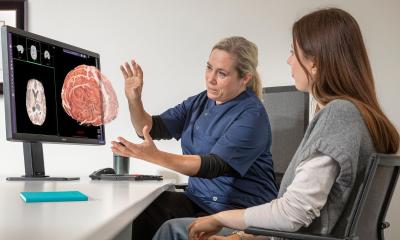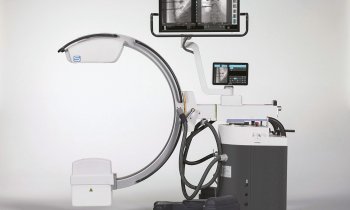Obesity from the lab point of view
Karoline Laarmann reports
Over the last 25 years overweight and obesity have become a global epidemic. According to WHO figures, at least 400 million adults are obese worldwide. Part of this phenomenon relates to lifestyle changes - lack of exercise, wrong eating habits - whereas genetic factors also play a role (according to twin studies, the determination of obesity is 70% nature and 30% nurture).

The increasing prevalence of overweight and obesity is associated with many chronic diseases, including diabetes mellitus, cardiovascular disease, stroke, hypertension and certain cancers. As a result, general practitioners and internists are increasingly confronted with this medical condition – and so are laboratory physicians.
Obesity is a diagnosis without science – it doesn’t even need a healthcare professional to detect whether someone is obese. The simple measurement of weight and height with the calculation of body mass index (BMI) quickly indicates whether a patient is overweight (BMI between 25 kg/m2 and 30 kg/m2) or obese (BMI over than 30 kg/m2). However, this simple diagnosis opens the door to further testing to detect the risks of further complications and increased risks in a patent’s health. Here the laboratory can render much assistance, according to Professor Joao Tiago Guimaraes, Head of the Clinical Pathology Service in São João Hospital and Professor of Biochemistry in the Faculty of Medicine, University of Porto, Portugal: ‘There are many parameters, such as hormones or proteins, that are typically changed in obese patients. Excluding the endocrinological causes of obesity that are rare, research in the last few years have found new lab markers to classify the pathophysiological progresses of the disease. To these belong adipokines, like adiponectin or resistin C-Reactive Protein (CRP) and the hormone leptin, which normally inhibits the sensation of hunger.’
Adipocytes (fat cells) are very important in the regulation of metabolism, but the proteins and hormones that they produce also have an effect on the immune system. ‘Adipocytes are bigger and more numerous in the obese, producing more pro-inflammatory cytokines with which more macrophages infiltrate the adipose tissue. The immune system reacts to metabolic changes in a way similar to the response to infection and there is an increased production of tumour necrosis factor (TNF-alpha) and interleukin-6 (IL-6),’Prof. Guimaraes explains. ‘For example, the abnormal production of TNF-alpha, IL-6 and CRP are associated with a chronic systemic state of inflammation that can lead to the development of insulin resistance, metabolic syndrome and diabetes mellitus type 2.’ This also has consequences in terms of laboratory results, with impaired glucose tolerance and dyslipidaemia.
All these complex biochemical mechanisms are translated as information in the central nervous system where the regulation of appetite, energy consumption, hormone level and growth takes place. Thus a huge branch of laboratory research concentrates on the study of the CNS.
Another matter of particular interest is the rather new research discipline of lipidomics, which contains all studies around lipids in biological systems. Due to technical progress in mass spectrometry and chromatography lipidomics has advanced in the recent years. However, expression profiles of lipid-associated genes and the determination of regulatory networks are necessary to receive a holistic picture of lipid associated metabolic processes.
Sometimes, the only alternative to weight reduction in morbid obesity is surgery, in form of gastric banding, gastric bypass or gastric sleeve. Numerous studies document that these procedures induce the reduction of insulin resistance as well as improvement of liver function and liver histology. ‘The increasing number of bariatric surgery also brings up a whole new catalogue of questions to our labs. These patients have to be monitored after surgery, because valuable substances such as proteins, vitamin and mineral levels can go down after the surgical intervention,’ he points out. ‘So, it’s fair to say that the tasks of the laboratory team in the companionship of obese patients really range from screening and detection to monitoring of obesity and the constellation of diseases that come with this medical condition.’
28.02.2011






